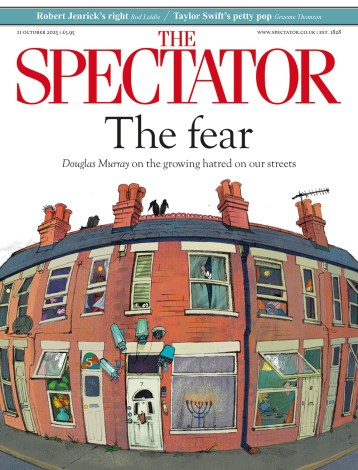Choosing to smell of something other than ourselves, and then perhaps in time coming to view that fragrance as ‘our’ smell — essence of us — is an odd business. I can’t wear Mitsouko because it smells of my great-aunt, for instance, which is at least relatively straightforward, but I also can’t wear Angel by Thierry Mugler because it smells of the Nineties and desperation; or L’Eau D’Issey because it smells of makeupless women in oversized clothing, stranded balefully in minimalist interiors; or anything with tuberose, tragically, because it powerfully reminds me of having morning sickness while wearing Fracas (‘my’ scent, until suddenly it became my kryptonite — so disgusting, now).
I judge people on how they smell, in a wildly snobbish way: anything too clean and fresh gets them dismissed as either simpletons or Americans, who like things to smell of laundry or cake; anything too recherché and ‘interesting’ seems crudely attention-seeking; anything too loud is too loud; but then anything too quiet is mimsy and annoying. So many scents are awful, which is why airport beauty halls smell of toilet cleaner. Sometimes the perfumes people wear make me chortle to myself, because they’re so at odds with that person’s external presentation: the jolly, ruddy-cheeked lady, stout-shoed, who favours the dirty-knickers notes of musk or ambergris; the sultry bombshell who smells of English gardens after rain rather than, say, opulent, damp, tropical gardenia; the gritty bloke who perhaps isn’t aware that he smells of 18th-century aristocrat. It’s all to do with sex, of course (you can always tell people who hate sex by the scent they wear. As a broad rule, people who really like sex tend to be unperfumed — sweat and skin, innit — though there are exceptions).
Lizzie Ostrom is a terrific perfume blogger, writing under the not entirely successful pen name Odette Toilette. Perfume is a marvellous and illuminating romp through the 20th century’s most historically significant fragrances. She picks ten scents to define each decade, each of these scents representing a particular aspect of perfume. So in the 1920s, for instance, she takes the sublime Habanita — clove, carnation, vanilla and leather — and tells its story: it was the first ‘smoking’ perfume, she says, because flappers and jazz babies smoked as they partied and because Havana, with its suggestion of tobacco rolled on gleaming brown thighs, was suitably risqué-sounding. In the 1930s we have, among others, Tweed by Lenthéric, which Ostrom catagorises as the ‘outdoor’ perfume, ‘practical and hardy’, the antithesis to the self-consciously glamorous scents that came before. In 1946, the launch of Black Satin by Angelique — the ‘publicity stunt’ perfume — saw America’s towns and cities literally bombarded with scent, in the form of perfumed dry ice (this was called Operation Odiferous).
It’s a wonderful, well-informed read and I loved it, but what Ostrom doesn’t do enough is to tell you how things actually smell, which is especially irritating when she is dealing with scents that are no longer around. Writing about the actual scent of something in an adequately evocative and opinionated way is unbelievably difficult, and where she does write about the actual smell she does so beautifully (of Ma Griffe, it ‘refashioned the scent of gardenia, taking it from candlelight to neon… Ma Griffe turns a 7 am Monday morning wake-up in February into a shriekingly bright day’).
I wish there were more of those bits. But it’s a lovely book, and if you’re thinking about Christmas presents I would buy it in conjunction with Luca Turin and Tania Sanchez’s magisterial Perfumes: The Guide, which I swear on my life is better and more entertaining than most novels, and which tells you exactly what things smell like. As a series of stories about the stories we tell when we wear X or Y, though, Ostrom’s book is charming and illuminating.






Comments